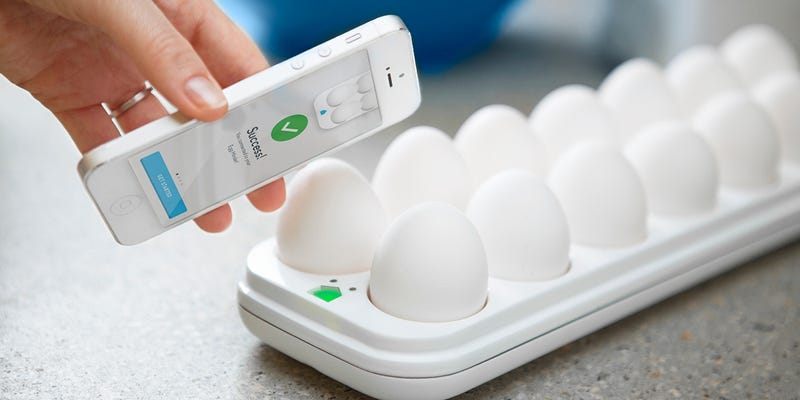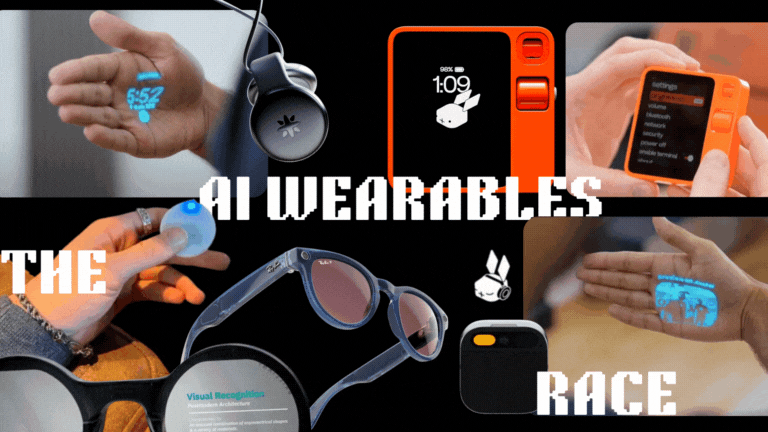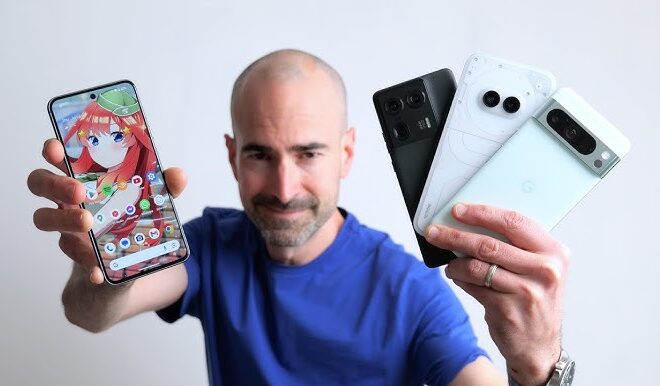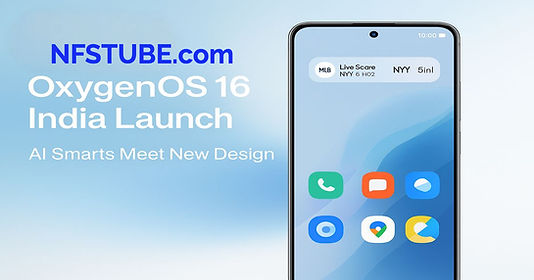
Beyond the Handset: A Deep Dive into the Next Wave of Android Phones and Smart Gadgets
The Android ecosystem has long been defined by the smartphone, a powerful pocket-sized computer that has reshaped modern life. For years, the cycle of innovation was predictable: faster processors, better cameras, and bigger screens. But we are now entering a new, more dynamic era. The latest Android news isn’t just about incremental upgrades; it’s about a fundamental shift in how we interact with technology. This evolution is driven by three powerful forces: the deep integration of on-device artificial intelligence, the diversification of hardware form factors, and the creation of a truly interconnected web of smart devices. From flagship Android phones that think and learn to revolutionary Android gadgets that seamlessly blend into our lives, the landscape is changing at an unprecedented pace. This article explores this exciting frontier, providing a comprehensive analysis of the key trends, groundbreaking devices, and the practical implications for consumers navigating this new world of intelligent, connected technology.
The Shifting Landscape: Key Trends Defining the Future of Android
The Android platform is undergoing a significant transformation, moving beyond a simple mobile operating system to become the intelligent fabric connecting a vast array of devices. Understanding the core trends driving this change is essential for anyone interested in the future of personal technology. These shifts are not isolated; they build on each other to create a more intuitive, powerful, and personalized user experience.
The On-Device AI Revolution
Artificial intelligence is no longer a nebulous concept confined to the cloud. The most significant trend in recent Android news is the push towards powerful, on-device AI. By processing data directly on the hardware, manufacturers can deliver faster, more private, and context-aware experiences. Google is at the forefront with its Tensor Processing Units (TPUs) and the Gemini family of AI models. Gemini Nano, for instance, is a model designed to run efficiently on mobile devices, powering features like Magic Compose in Messages and advanced summarization in the Recorder app. Samsung has also made a major splash with its “Galaxy AI” suite, offering real-time Live Translate during phone calls and the intuitive “Circle to Search” feature. This on-device approach minimizes latency and enhances privacy, as sensitive data doesn’t need to be sent to a server for processing. This is a paradigm shift from relying on voice assistants for simple queries to having a proactive assistant integrated into the core functionality of the phone.
Form Factors Beyond the Monolith
The traditional rectangular smartphone slab, while dominant, is no longer the only form factor in town. Foldable phones have matured from expensive novelties into viable, premium devices. Samsung’s Galaxy Z Fold and Z Flip series have demonstrated the real-world utility of a larger, tablet-like screen that fits in your pocket. Google’s Pixel Fold has further validated the category, bringing the company’s software prowess to the foldable space. The innovation doesn’t stop there. While still largely in the concept stage, rollable and slidable displays showcase a future where screen size is fluid and adaptable. This diversification allows for more specialized devices that cater to different needs, whether it’s the multitasking power of a book-style foldable or the compact convenience of a clamshell.
The Power of the Interconnected Ecosystem
For years, one of Android’s perceived weaknesses was its fragmented ecosystem compared to Apple’s walled garden. That is rapidly changing. Google has invested heavily in creating a more cohesive experience across different Android gadgets. Features like Fast Pair make connecting Bluetooth accessories as simple as a single tap. Nearby Share allows for seamless file transfers between Android phones, tablets, and even Chromebooks. The “Better Together” initiative aims to make devices context-aware, so your smartwatch can unlock your phone, or you can copy text on your tablet and paste it on your phone. This focus on interoperability is crucial, transforming a collection of individual devices into a single, intelligent system that works in concert to make the user’s life easier.
A Closer Look: The Evolution of Flagship Android Phones

While the ecosystem expands, the smartphone remains its central hub. The competition among flagship Android phones is fiercer than ever, with manufacturers taking distinct philosophical approaches to innovation. This results in a diverse market where consumers can choose a device that perfectly aligns with their priorities, be it software intelligence, hardware prowess, or unique design.
The Google Pixel Lineup: A Pure AI Vision
Google’s Pixel phones are the purest expression of the company’s AI-first vision. Rather than chasing the highest raw specifications, Google focuses on the synergy between its custom Tensor silicon and its software. The Tensor G-series chips are designed specifically to accelerate machine learning tasks, which is the secret sauce behind the Pixel’s acclaimed camera system. Features like Magic Eraser, which removes unwanted objects from photos, and Best Take, which combines multiple shots to ensure everyone looks their best, are feats of computational photography that rely more on software algorithms than on lens hardware alone. The upcoming Pixel 9 series is expected to push this integration even further, likely featuring a next-generation Tensor chip and deeper integration with the Gemini AI model, promising an even more helpful and proactive user experience.
Samsung’s Galaxy S and Z Series: Pushing Hardware Boundaries
If Google’s approach is software-led, Samsung’s is a masterclass in hardware engineering and feature-rich innovation. The Galaxy S series, particularly the Ultra models, represents the pinnacle of “more is more.” They boast some of the most advanced camera systems on the market, with periscope zoom lenses offering incredible optical magnification and high-megapixel sensors capturing stunning detail. Beyond the camera, features like the S Pen stylus and Samsung DeX, which provides a desktop-like experience when connected to a monitor, cater to productivity-focused power users. Meanwhile, the Galaxy Z series continues to refine the foldable experience with each generation, improving hinge durability, screen brightness, and the multitasking software that makes the form factor so compelling.
The Broader Market: Competition Breeds Innovation
The Android phones market is far from a duopoly. Other manufacturers bring unique strengths that enrich the ecosystem. OnePlus continues to focus on raw performance and incredibly fast charging speeds, appealing to gamers and users who value a smooth, responsive experience. Brands like Nothing have carved out a niche with a focus on distinctive design and a clean, near-stock Android software experience. This healthy competition ensures that innovation continues across the board, preventing stagnation and giving consumers a wealth of excellent options at various price points.
More Than a Phone: The Rise of Companion Android Gadgets
The most exciting Android news today often comes from devices that aren’t phones at all. The ecosystem is rapidly expanding to include a new generation of smart Android gadgets designed to complement the smartphone and integrate technology more seamlessly into our daily routines. These devices prioritize ambient computing, offering functionality without demanding constant attention.
The Smart Ring: A New Frontier in Wearables
The emergence of the smart ring, exemplified by the upcoming Samsung Galaxy Ring, marks a significant step in wearable technology. Unlike a smartwatch, a smart ring is a screenless, discreet device focused primarily on passive health and wellness tracking. Its purpose is to collect high-fidelity data on metrics like sleep stages, heart rate variability, body temperature, and activity levels with minimal user interaction. This makes it ideal for individuals who want deep health insights without the notifications, distractions, or charging demands of a full-fledged smartwatch. The potential extends beyond health; future iterations could easily incorporate NFC for contactless payments or simple gesture controls for managing music playback or smart home devices, making it a truly ambient computing device.
The Evolution of Smartwatches and Wear OS

After a few years of languishing, Google’s Wear OS has been revitalized through a close partnership with Samsung. The result is a powerful and refined smartwatch platform that offers deep integration with the Android ecosystem. Devices like the Google Pixel Watch and Samsung Galaxy Watch series provide rich notifications, robust fitness tracking, and access to a growing library of third-party apps. They serve as a convenient extension of the phone, allowing users to triage messages, control media, and use Google Wallet or Samsung Pay, all from their wrist. The integration with health platforms like Fitbit (for Google) and Samsung Health provides a comprehensive view of a user’s well-being, syncing data seamlessly back to their phone for detailed analysis.
The Future of Audio and Augmented Reality
The “hearables” category is also evolving rapidly. Modern wireless earbuds are no longer just for listening to music. They are becoming powerful audio computers packed with sensors and AI. Features like active noise cancellation and transparency modes are now standard, but the future lies in capabilities like real-time language translation, as seen in Google’s Pixel Buds. Meanwhile, the dream of augmented reality (AR) glasses is slowly becoming a reality. While still in their early stages, devices like the Meta Ray-Ban Smart Glasses integrate cameras and audio into a familiar form factor, hinting at a future where digital information is overlaid onto the real world, with the Android phone acting as the central processing unit.
Making the Right Choice: Tips for Navigating the Android Market
With such a vast and rapidly evolving array of Android phones and Android gadgets, making an informed purchasing decision can be daunting. Focusing on your personal needs and understanding the long-term value of a device are key to navigating the market successfully.
Identify Your Primary Use Case
-Reviewer-Photo-SOURCE-Julian-Chokkattu-(no-border).jpg)
Before looking at specs, consider how you will use your device. Are you a passionate photographer who wants the best point-and-shoot camera experience? A Google Pixel might be your best bet. Are you a business professional who needs to multitask, take notes, and connect to an external display? A Samsung Galaxy S Ultra with its S Pen and DeX mode would be a perfect fit. If you prioritize a fluid gaming experience and fast charging, a device from OnePlus could be the right choice. By defining your primary needs first, you can narrow down the options and avoid paying for features you’ll never use.
The Importance of Software Support and Updates
A common pitfall is to focus solely on the hardware at the time of purchase. However, the software support policy is one of the most critical factors for a device’s longevity, security, and overall value. Google and Samsung now lead the industry by offering up to seven years of OS and security updates for their flagship devices. This commitment ensures that your phone will not only be protected from threats but will also continue to receive new features for many years. When evaluating different Android phones, always check the manufacturer’s update promise. A cheaper device with only two years of support may end up being a worse long-term investment than a slightly more expensive one with a longer support window.
Evaluate the Broader Ecosystem
Think beyond the individual device and consider the ecosystem you’re investing in. If you already own a Samsung Galaxy Watch and a Galaxy Tab, buying a Samsung phone will provide the most seamless experience, with features like automatic earbud switching and cross-device copy-paste. Similarly, if you’re invested in Google’s services and own a Pixel Watch or Nest Hub, a Pixel phone will offer the tightest integration. Considering how a new phone or gadget will interact with your existing technology is a crucial step in making a smart purchase.
Conclusion: The Dawn of an Intelligent, Ambient Android
The Android ecosystem is at an inflection point. The narrative is no longer confined to the annual refresh cycle of smartphones but has expanded to encompass a holistic vision of ambient, intelligent computing. The latest advancements in on-device AI are making our devices more personal and proactive, while the diversification of form factors and the rise of new Android gadgets like smart rings are embedding technology more seamlessly into our lives. For consumers, this translates into more choice and capability than ever before. By focusing on personal use cases, prioritizing long-term software support, and considering the broader device ecosystem, users can fully harness the power of this new era. The future of Android phones and gadgets is not just about being smarter; it’s about creating a more connected, intuitive, and helpful technological world that adapts to us, not the other way around.



